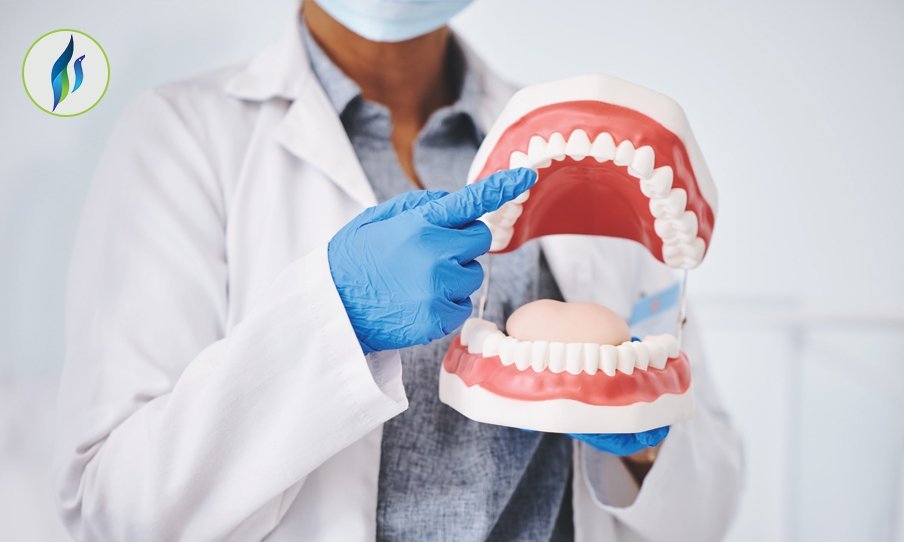Oral Pathology: Unveiling the Diseases of the Mouth

Oral pathology is a dental and pathologic specialty that is involved in the study, diagnosis, and management of oral and maxillofacial diseases. Oral pathology involves the jaws, mouth, salivary glands, and adjacent structures. Oral pathology, as an integral branch of dental science, forms the foundation for the identification of abnormal conditions that not only influence oral health but also commonly manifest as systemic diseases.
The specialty of oral pathology bridges the gap between laboratory diagnosis and clinical dentistry. Oral pathologists are specifically trained to investigate the etiology and nature of oral disease through microscopic analysis of tissue, clinical investigation, and, in certain situations, radiographic investigation. Oral pathologists’ work enables early diagnosis and adequate treatment planning for a variety of conditions that could be encountered within the oral cavity. The conditions could range from as benign as routine infections and inflammatory conditions to potentially life-threatening neoplasia.
Early detection of oral cancer is one of the most vital roles of oral pathology. The most common cancer of the mouth, responsible for over 90% of all oral cancers, is squamous cell carcinoma and usually occurs on the tongue, floor of the mouth, the lips, or the cheeks. Tobacco and alcohol consumption, infection with human papillomavirus (HPV), and poor oral hygiene are all significant causative factors. Oral pathologists can detect cancer in its earliest stages by performing biopsy and histopathological examination, which largely improves the treatment outcome and survival.
In addition to cancer, oral pathologists also diagnose numerous precancerous lesions, including leukoplakia and erythroplakia. Leukoplakia is white lesions in the mouth which are not rub-off and lack a well-established etiology. Erythroplakia, which is less frequent, is a velvety, red lesion and is more likely to have malignant change. Both need close attention and most likely require biopsy to eliminate dysplasia or carcinoma.
Another common condition in oral pathology is oral candidiasis, or thrush. It is a fungal infection by Candida albicans and usually occurs in people with compromised immune systems, like patients on chemotherapy, on inhaled corticosteroids, or HIV/AIDS. It manifests as creamy white patches on the tongue, inner cheeks, and sometimes the roof of the mouth, usually with pain or burning.
Lichen planus is another serious disease that is diagnosed in oral pathology. It is a chronic inflammatory condition that occurs in the mucous membranes in the mouth and may be seen as lacy white lesions, red inflamed spots, or even painful ulcers. Although the exact cause is uncertain, it is believed to be immune-mediated. Oral lichen planus carries a low risk of malignant transformation in some instances and thus requires follow-up.
Oral pathologists also deal with odontogenic tumors and cysts—conditions that arise from tooth formation tissue. They include keratocystic odontogenic tumors, ameloblastomas, dentigerous cysts, and odontomas. Although they are mostly benign in nature, they all possess the ability to become locally aggressive and hence need to be handled via surgical interventions. Early detection avoids symptoms from arising such as jaw fracture, facial asymmetry, and loss of teeth. Diagnostic equipment employed in oral pathology consists of a comprehensive clinical examination, radiographic imaging, biopsy, and microscopic examination. Histopathology is still the gold standard against which the majority of oral diseases are diagnosed. Along with this, newer techniques like immunohistochemistry, molecular diagnostics, and cytogenetics are being employed to increase accuracy more and more. These machines assist in identifying particular proteins, genetic mutations, or pathogens that cannot be seen with the naked eye.
Treatment for oral pathology is disease-specific. Infections such as candidiasis can be managed with antifungal medications, and inflammatory lesions such as lichen planus can be managed with corticosteroids or immunosuppressive agents. Benign tumors or cysts are generally excised surgically. For oral cavity cancer, a multidisciplinary treatment with surgery, radiotherapy, and chemotherapy is often employed. Oral pathologists typically collaborate with surgeons, oncologists, dermatologists, and general dentists to manage the patient holistically.
Technological advancements and research continue to evolve the specialty of oral pathology. Over the last few years, there has been unprecedented growth in molecular biology, artificial intelligence (AI), and digital pathology. All these technologies contribute to enhanced identification of disease markers, faster diagnosis, and individualized treatment planning. For example, AI-based imaging analysis software is being developed to enable pathologists to detect malignancies more accurately.
Prevention and public education in oral pathology cannot be overstressed. Patient education about early signs of oral disease—i.e., several mouth ulcers, spontaneous bleeding, non-healing ulcers, or mucosal color or texture change—can lead to early diagnosis and treatment. Public health education about regular dental examination, smoking, HPV vaccination, and oral hygiene can be synonymous with prevention of oral disease.
In addition, oral pathology assists in the interpretation of systemic conditions that express themselves in the oral cavity. Conditions like diabetes, anemia, and autoimmune diseases tend to express themselves with oral presentations such as dry mouth, ulcers, or gum disease prior to systemic diagnoses. Therefore, the oral cavity can be utilized as a window to an individual’s overall health, and the professionalism of oral pathologists is extremely important in correlating these presentations with underlying conditions. In short, oral pathology is a dynamic and non-replaceable science that aids in accurate diagnosis and effective treatment of diseases of the oral and maxillofacial area. Through careful examination and interdisciplinary coordination, oral pathologists enable the diagnosis of many conditions—ranging from benign disorders to complex malignancies—playing an important role in both dental and general healthcare. With advancing technology, the future of oral pathology promises even more advancements in early detection, accurate diagnosis, and improved patient outcomes.
